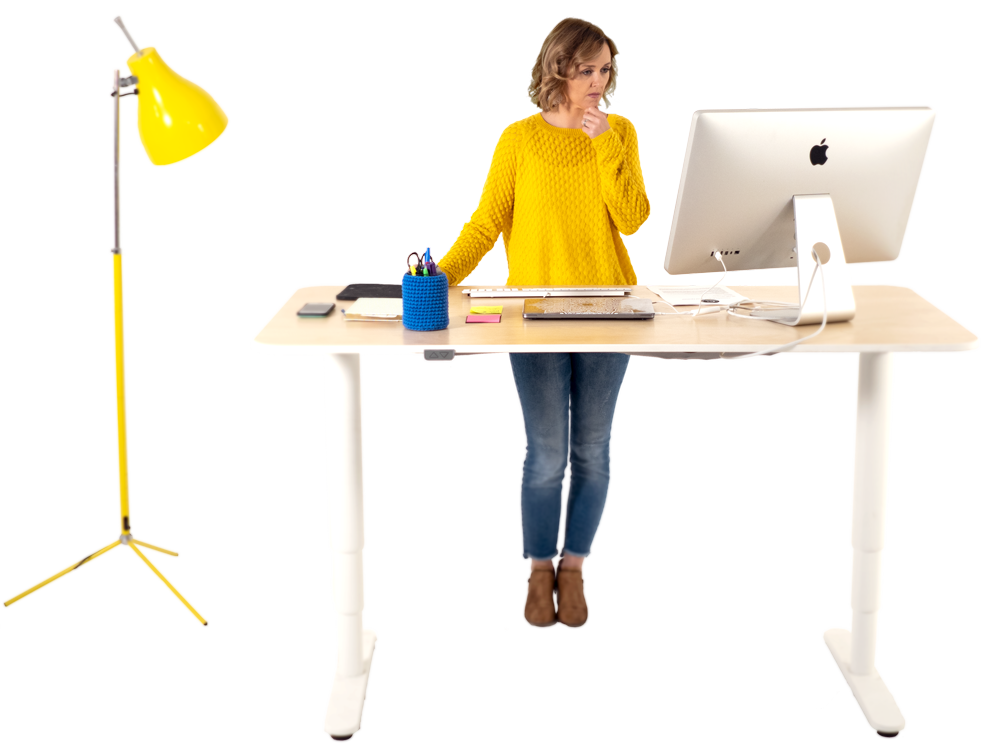 I recently found myself racing through university corridors, heels clacking on concrete floors, lost, and late for an interview. Having just battled Sydney’s peak hour traffic and struggled to find parking in our city’s gridlocked streets, I was disoriented in a maze of modern building design. Apparently the state-of-the-art business school, with its “9,100 square meters of flexible teaching and learning space” was designed to “inspire and enable generations of leaders.” All it inspired in me were sweaty palms, a tense jaw and a cortisol spike that would scare off even the most vicious of sabre tooth tigers. It was not my finest moment and to make it worse, I had a camera crew following my every move.
I recently found myself racing through university corridors, heels clacking on concrete floors, lost, and late for an interview. Having just battled Sydney’s peak hour traffic and struggled to find parking in our city’s gridlocked streets, I was disoriented in a maze of modern building design. Apparently the state-of-the-art business school, with its “9,100 square meters of flexible teaching and learning space” was designed to “inspire and enable generations of leaders.” All it inspired in me were sweaty palms, a tense jaw and a cortisol spike that would scare off even the most vicious of sabre tooth tigers. It was not my finest moment and to make it worse, I had a camera crew following my every move.This was all part of a short documentary I’m making for Screen Australia and whimn. The concept for the film is to record the day of the average working mother, on the average working day, as she attempts to tick every item on the “Should Do” list. The idea came about when I sat down and totalled the time experts and society at large expect we should spend on various aspects of life ranging from our health, to our relationships, to domestic responsibilities, and our career.
As a health journalist with a chronic illness which is worsened by lifestyle factors, I’ve spent many long days and late nights deep diving into these things. The conclusions aren’t particularly surprising. Want good health? You’ll need between seven and nine hours sleep each night depending on your genetics, you’ll need to eat whole foods and avoid junk, and you’ll need to exercise for a minimum of 30 minutes a day. Want to be a good parent? Time is the the currency of love, don’t you know. Want to get ahead in your career? Research shows that the well paid jobs – the CEOS, the GMs and the MDs – they all require more than the standard 38 hour work week. In fact, one in five men work more than 50 hours a week.
All this is to say, when I tallied the total hours spent ticking the boxes on the ambitious working mother’s daily “Should Do” list – taking into account everything from sleeping enough, to working enough, to cleaning enough, to mothering enough – the numbers didn’t add up. There are 24 hours in a day. Ticking all the boxes required 28 hours. In other words, there is a distinct work-life time deficit. And it seems many of us are paying off the shortfall with our health.
Marian Baird, who is a professor of gender and employment relations at the University of Sydney, agreed to take part in my documentary social experiment, which is how I came to find myself hightailing it through the corridors of the university’s bewildering business school building, camera crew in tow. After I’d apologised profusely for my unpunctuality (she’s one of the few people that I could honestly confess that childcare drop-off shenanigans had induced my tardiness), we sat down for our interview and she explained that the challenges that come with combining work and family for mothers of young children is one of the major social problems being faced by families in the new millennium.
For the last five years Baird and her colleagues have been tracking the lives of more than 2000 women after they had their first child. It’s called the Millennium Mums Survey and the findings for women like me are rather alarming. Essentially, the mental and physical health of women working full-time with young children is diabolical. The graph shows that our mental health falls off a cliff as we attempt to dance the work-life two step, and our physical health doesn’t fare much better. It’s not just full-time working mothers doing it tough though. Basically, regardless of whether mothers are full-time, part-time, or staying-at-home, their health and wellbeing decline over time after having kids. “We don’t know exactly what is causing that, but one of the issues I think is the stress. I mean how do you combine career, ambition, desire to be a good mother, in the hours that you have? Something does give,” Baird said.
It’s interesting that the group of women that fared the best in the survey were those working less than 30 hours a week. “They keep one foot in the labour market, but they also manage the rest of the lives by dropping back in work hours for a period of time while their children are young. Of course the consequences of that later are less openings for the promotion positions, less opportunity for training and development, less ability to travel, and of course lower pay packets and lower superannuation,” said Baird, who was well aware that she was talking to a millennium mother raised to believe that I need to shatter the glass ceiling, to “lean in” to my career, and to put my excellent education to good use and pave the way for gender equality in the work place. “That period, aged between 30 and 40 in most jobs is when the career takes off and unfortunately, it’s exactly when most women have their first child. So it’s that really difficult tension point in women’s lives,” she said.
The work-life-health dilemma is not, of course, uniquely owned by working mothers. As I wrote in my piece Health or Wealth: Finding the Work-Life-Health Balance, both men and women are risking their health to pay for their careers. In an age where one in five parents working full time is putting in five extra weeks a year in unpaid work just to keep up with the demands of the job, where a third of parents report being burned out often or all the time, and 50 percent of parents say that their work-life balance is increasingly a source of stress, the charity Working Families has declared September 23 to be “Go Home on Time Day.”
Fortunately, my “Mission Impossible” attempts to do “it all,” are not a true reflection of my actual working day. Life with a chronic illness has made me all-too aware that I’m no good to anyone – my kids, my husband, my friends, or my colleagues – if I’m in pieces on the floor. On the day of filming, I did managed to tick every box on the “Should Do” list. I zipped to the gym, I played with my kids, I even managed to put in a “go girl-power” 10-hour work day by sneaking in a few extra hours once the kids were in bed. Unfortunately, by the time I began the second shift, putting in the requisite 2.5 hours of housework, my ticking clock timer ran out and I was operating on borrowed time. My day finished at 2am and as I set the alarm for 6am the next day I have never felt so deeply aware that the idea that we can “have it all” is a big fat myth.





 My Year of Living Mindfully (DVD)
My Year of Living Mindfully (DVD) The Connection (DOWNLOAD-TO-OWN)
The Connection (DOWNLOAD-TO-OWN) My Year Of Living Mindfully - Book
My Year Of Living Mindfully - Book




